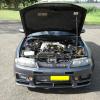Twincharging Cut Off?
Announcements
-
Similar Content
-
Latest Posts
-
By Dose Pipe Sutututu · Posted
Haha watch Alex's eye twitch when you mention Nistune to him in person lol. He's not a fan, then again it's quite a niche product. I personally don't mind them, but most usually steer clear from it. Word of advice, do not ground the AFM to the chassis, there are heaps of incorrect guides on the interwebs. Send both GND on the AFM back to Sensor GND on the harness. -
Note I edited my post, so Sleeper's quote is not the same as what I meant any more.
-
That's a whole 'nother issue. Nissan ones get dirty and sticky. The coolant heats the wax pellet thingo to close the valve, so it is open when it is cold. And so if there is no coolant it just takes longer to close, because the heat has to soak all the through the inlet manifold.
-
I feel like this is crazy pills though. Isn't it locked up all the time anyway? It shouldn't flare anywhere if it only unlocks momentarily while it shifts gears. And if it flares like that when shifting gears, then the 8HP with a 5500 stall is not driving as well when on the road and/or track use..
-






Recommended Posts
Create an account or sign in to comment
You need to be a member in order to leave a comment
Create an account
Sign up for a new account in our community. It's easy!
Register a new accountSign in
Already have an account? Sign in here.
Sign In Now